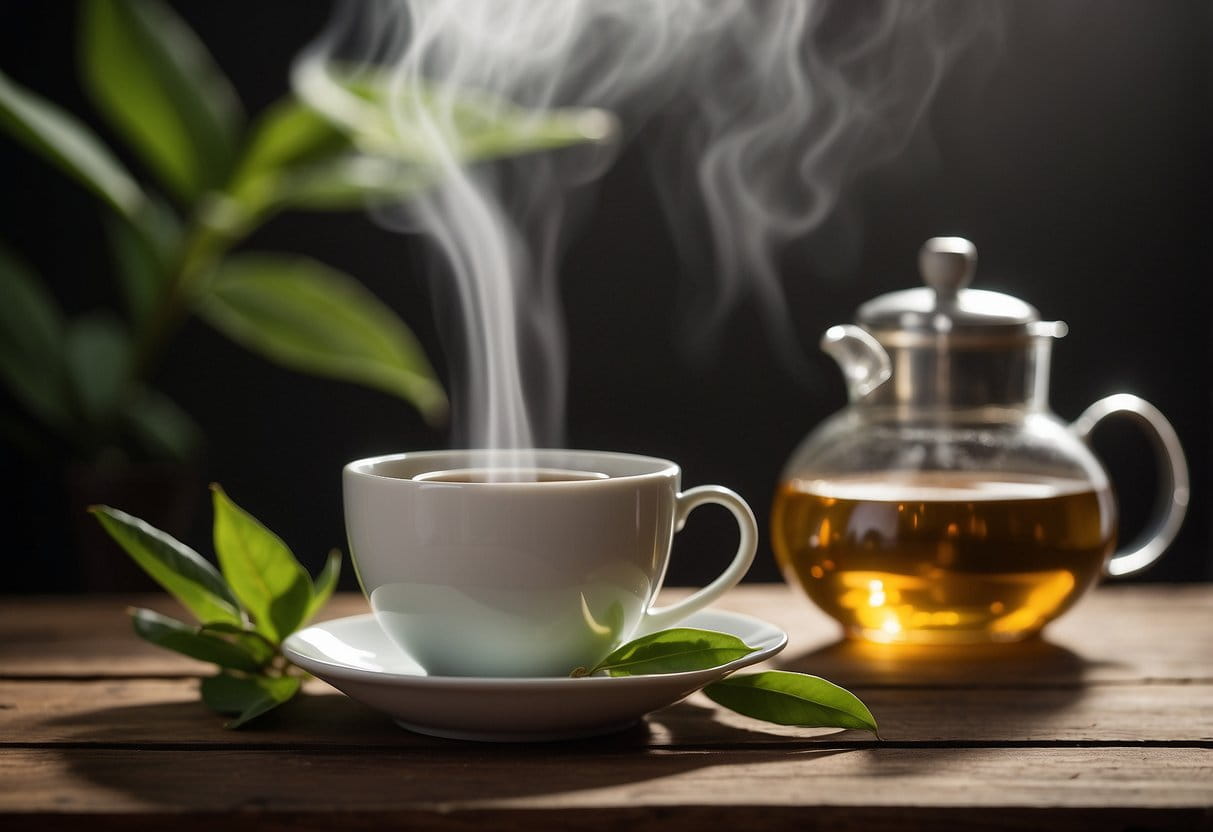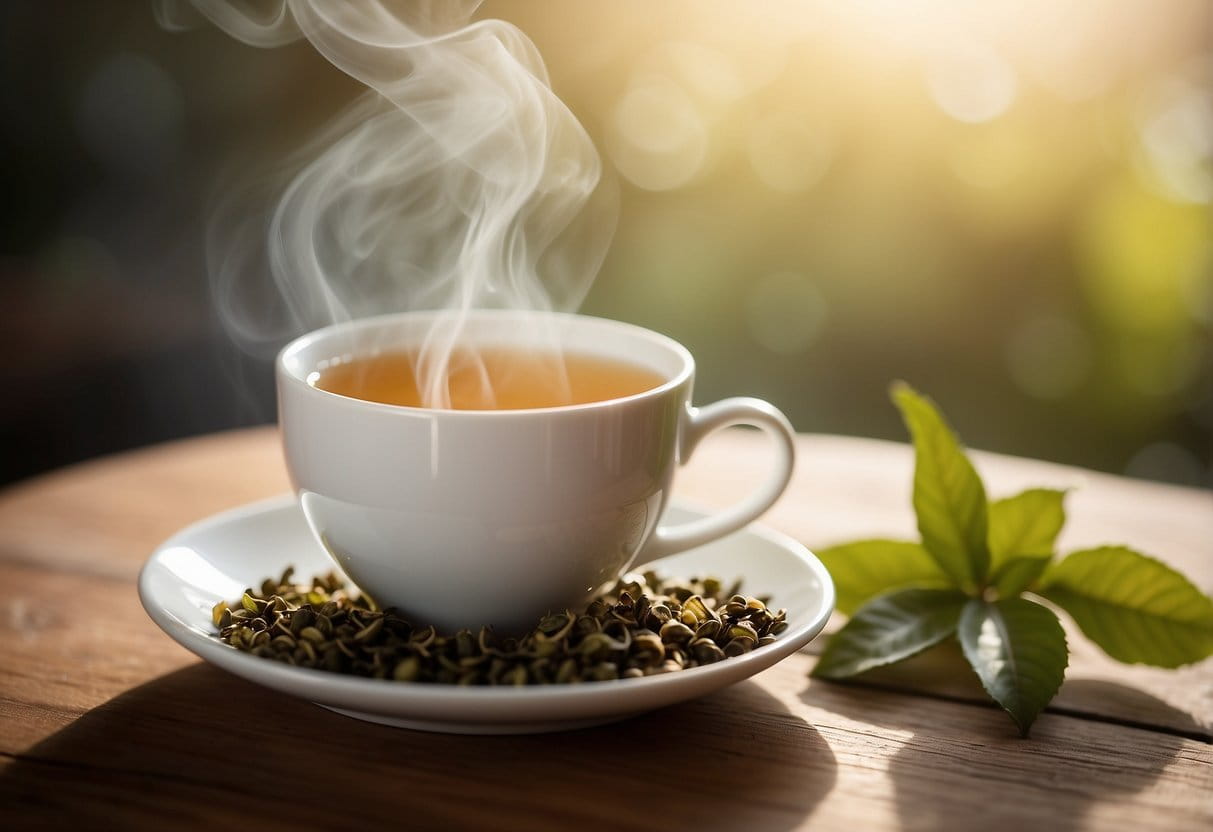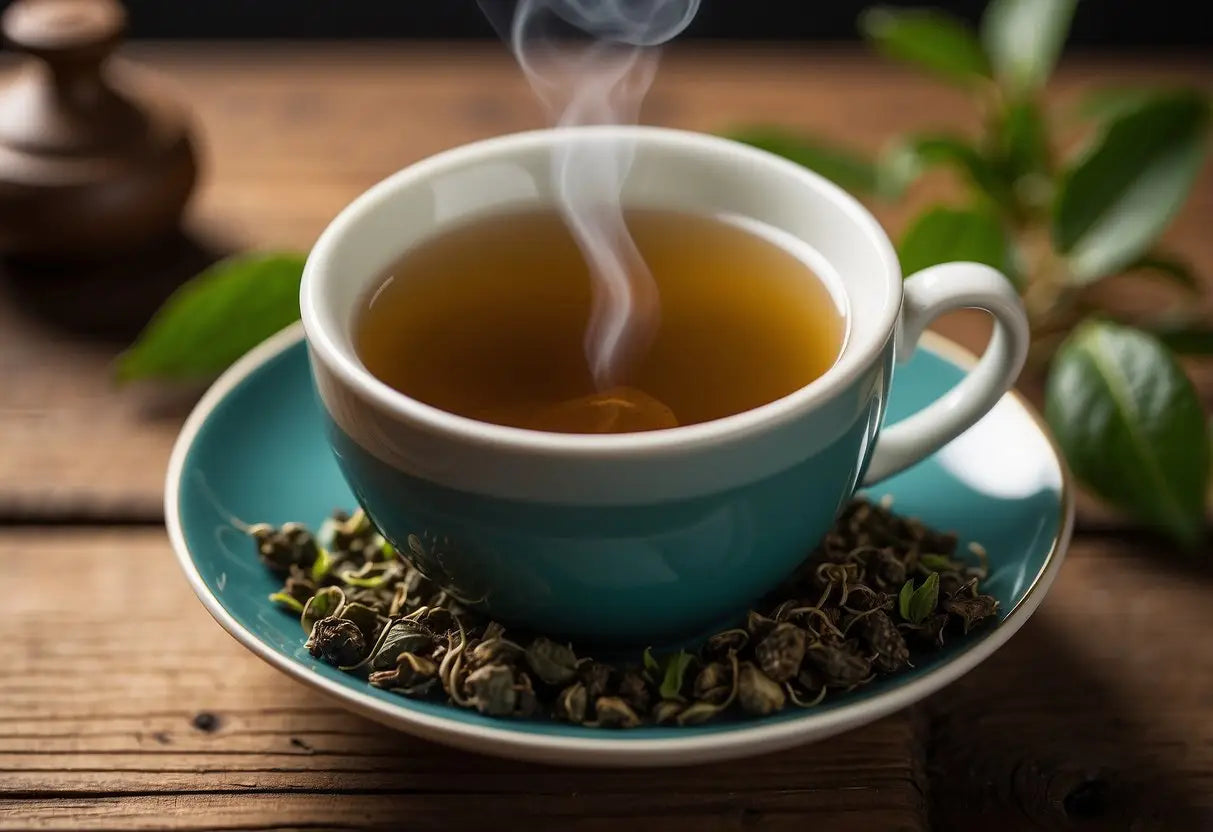Oolong Tea Caffeine
Oolong tea contains moderate levels of caffeine compared to other types of tea.
A typical 8-ounce serving of oolong tea has about 37-55 mg of caffeine. This is less than black tea but more than green tea.
Here's a quick comparison:
Bestsellers
| Type of Tea | Caffeine Content (per 8 oz) |
|---|---|
| Black Tea | 47-70 mg |
| Oolong Tea | 37-55 mg |
| Green Tea | 25-45 mg |
| White Tea | 15-30 mg |
The exact caffeine content can vary based on factors like the brand and brewing method.
If you are sensitive to caffeine, it's advisable to monitor your intake.
Brewing time and leaf quality also play a role in the caffeine levels. Longer brewing times and higher-quality leaves usually mean more caffeine.
Consider using loose-leaf oolong tea for a more customizable experience.
Keep in mind that the caffeine in oolong tea can provide a mild energy boost without the jitters often associated with coffee.
Understanding these factors can help you make informed choices about your tea consumption.
Health Benefits of Oolong Tea Caffeine

Oolong tea caffeine provides several health benefits, including enhanced mental alertness, metabolic improvement, and significant antioxidant activity.
Mental Alertness
Caffeine in oolong tea stimulates the central nervous system. This results in increased alertness and cognitive function. You may notice improved focus and a reduction in mental fatigue.
Oolong tea contains both caffeine and L-theanine. L-theanine promotes relaxation without drowsiness. This combination boosts your mental clarity and concentration more effectively than caffeine alone.
Regular consumption of oolong tea can help you stay mentally sharp. Students and working professionals often drink it to enhance productivity and maintain sustained attention throughout the day.
Metabolic Enhancement
Oolong tea caffeine also promotes metabolic activities. This can be beneficial if you are looking to manage your weight or boost your energy levels. Caffeine stimulates the metabolism, leading to an increase in calories burned at rest.
Lao Ban Zhang
In addition to caffeine, oolong tea contains polyphenols. These compounds work with caffeine to enhance fat oxidation and improve the efficiency of fat metabolism. Studies show that drinking oolong tea may help reduce body fat and waist circumference.
Additionally, the moderate caffeine levels can provide an energy lift without the jitteriness that often accompanies higher doses found in other caffeinated beverages.
Antioxidant Activity
The caffeine in oolong tea also acts as an antioxidant. Antioxidants neutralize free radicals, reducing oxidative stress. This can help lower your risk of chronic diseases such as heart disease and cancer.
Oolong tea is rich in catechins and theaflavins. These antioxidants have been shown to protect cells from damage and reduce inflammation. Drinking oolong tea regularly can contribute to overall health by supporting your body’s natural defense mechanisms.
Furthermore, the antioxidants in oolong tea also help maintain youthful skin. They can slow down the aging process, giving you a healthier and more vibrant appearance.
Comparison to Other Teas

Oolong tea differs in caffeine content compared to green, black, and white teas. These differences are important for guiding your choice depending on your caffeine tolerance and taste preferences.
Oolong vs. Green Tea
Green tea typically has lower caffeine levels than oolong tea. Green tea is generally lighter and milder in flavor. On average, a cup of green tea contains:
- Caffeine: 15-30 mg
- Flavor: Grassy, vegetal
Oolong tea contains higher caffeine, ranging from 30-50 mg per cup. Its semi-oxidized leaves offer a more complex flavor, often described as floral or fruity. This makes oolong a preferred choice if you enjoy robust teas with a bit of a caffeine kick.
Oolong vs. Black Tea
Black tea usually contains more caffeine than oolong, around 40-70 mg per cup. Black tea is fully oxidized, which gives it a stronger, more astringent flavor. Comparatively:
- Oolong tea: 30-50 mg of caffeine
- Black tea: 40-70 mg of caffeine
Black tea suits those who need a higher caffeine boost. If you prefer a balance between flavor and caffeine, oolong provides a happy medium with its moderate oxidation and nuanced taste profile.
Oolong vs. White Tea
White tea has the least caffeine among these teas, often between 10-20 mg per cup. Its delicate and subtle flavor stems from its minimal processing. When comparing:
- Oolong tea: 30-50 mg of caffeine
- White tea: 10-20 mg of caffeine
Choose white tea for lightness and minimal caffeine. Oolong offers a richer taste and moderate caffeine, ideal if you seek flavor complexity without the strength of black tea.
Factors Influencing Caffeine Levels
The caffeine content in oolong tea can vary significantly, influenced by multiple factors. Key elements include the conditions under which the tea is cultivated, the methods used in its processing, and the techniques applied during brewing.
Cultivation Conditions
The caffeine levels in oolong tea can be affected by the altitude at which the tea is grown. Teas cultivated at higher altitudes tend to have higher caffeine levels due to cooler temperatures and slower growth rates.
Soil type and nutrient availability also play a role. Rich, fertile soil will yield tea leaves with different caffeine content compared to poorer, less fertile soil.
Climate conditions such as sunlight exposure and rainfall affect the plant's growth cycle, thereby influencing caffeine levels. More sunlight typically means higher caffeine, as the plant produces it as a natural pesticide.
Processing Methods
The degree of oxidation during the processing of oolong tea significantly impacts caffeine levels. Partially oxidized leaves usually retain higher caffeine content compared to fully oxidized ones.
Roasting is another critical factor. Lightly roasted teas tend to have more caffeine compared to heavily roasted variations, as prolonged roasting can degrade caffeine content.
The time period the leaves are allowed to wither also matters. Longer withering times can result in higher caffeine concentrations, as water evaporates and compounds within the leaves become more concentrated.
Brewing Techniques
The temperature of the water you use for brewing oolong tea can change the caffeine extraction. Hotter water tends to extract more caffeine faster from the tea leaves.
Steeping time is crucial; longer steeping times result in higher caffeine levels in the cup. For a stronger, more caffeinated brew, allow the tea to steep for a longer period.
The ratio of tea leaves to water also impacts caffeine content. Using more leaves in less water yields a higher caffeine concentration in your tea. Always consider these factors to customize your oolong tea experience to your liking.
Caffeine Sensitivity and Oolong Tea

Caffeine sensitivity varies among individuals. Some people might find even small amounts of caffeine highly stimulating.
When drinking oolong tea, it's essential to know how your body reacts to caffeine. Typically, oolong tea contains 30-50 mg of caffeine per cup.
Caffeine Content Comparison:
- Oolong Tea: 30-50 mg
- Black Tea: 40-70 mg
- Green Tea: 20-45 mg
- Coffee: 95 mg
If you are sensitive to caffeine, consider limiting your intake to one or two cups of oolong tea per day.
Oolong tea may also cause fewer jitters compared to coffee due to its lower caffeine content.
Consider drinking oolong tea earlier in the day. Caffeine sensitivity can disrupt sleep if consumed late in the afternoon or evening.
Monitor how your body responds after consuming oolong tea. Adjust your intake accordingly to avoid any discomfort.
Recommended Consumption

When consuming oolong tea, moderation is key. The recommended daily intake is typically 2 to 3 cups.
Oolong tea contains varying caffeine levels, generally ranging between 30 to 50 mg per 8 oz cup. This makes it essential to monitor your consumption if you are sensitive to caffeine.
To minimize any adverse effects, try to avoid drinking oolong tea late in the evening. This helps prevent sleep disturbances due to caffeine intake.
For a balanced routine:
- Morning: One cup to kickstart your day
- Afternoon: One cup to enhance focus and alertness
- Early evening: One cup to unwind, ensuring it is not too close to bedtime
Always stay hydrated by complementing your tea intake with plenty of water.
Decaffeination of Oolong Tea
The process of decaffeination in oolong tea involves several steps to ensure the removal of caffeine while maintaining flavor.
Methods of Decaffeination
- Solvent-Based Process: Uses solvents like methylene chloride or ethyl acetate. These bind to caffeine molecules, which are then removed.
- Carbon Dioxide (CO2) Process: Utilizes pressurized CO2 to extract caffeine, keeping most of the tea's flavors intact.
- Water Processing: Involves soaking tea leaves in water to dissolve caffeine, then filtering it out.
Effect on Flavor and Nutrients
- Flavor: Smaller changes in flavor compared to regular tea, although some notes may become muted.
- Nutrients: Preserves many of the antioxidants present in the original tea.
Comparing Caffeine Levels
| Tea Type | Caffeine (mg per 8 oz) |
|---|---|
| Regular Oolong | 30-50 |
| Decaf Oolong | 2-5 |
Considerations
- Health Benefits: Offers similar benefits to regular oolong tea without the caffeine.
- Availability: May be less commonly available than regular oolong, but more specialty stores are stocking it due to demand.
By understanding these aspects, you can make an informed choice about incorporating decaf oolong tea into your diet. This tea allows you to enjoy the rich flavors of oolong without the jittery effects of caffeine.
← Older post Newer post →











